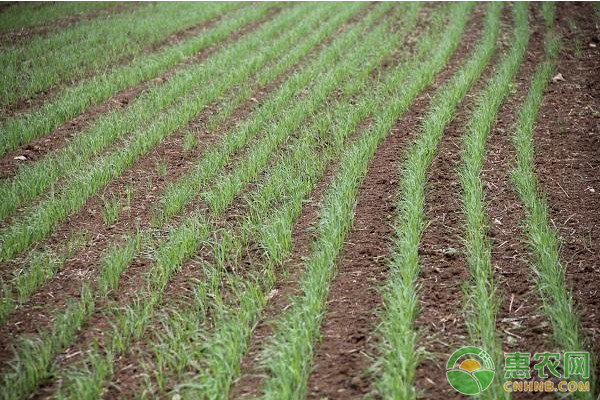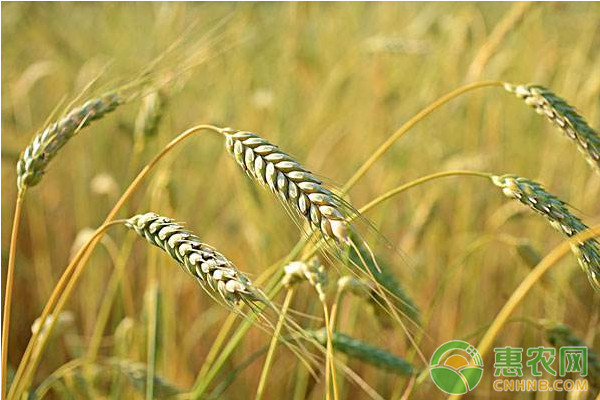The harvesting and storage technology of wheat is one of the most important aspects of wheat planting. Firstly, the management of wheat from heading to flowering to filling stage is the main stage of grain formation and grain weight determination. Prevent premature aging or greed, prolong the functional period of the upper leaves, improve the photosynthetic efficiency, strive to fill the grains and create high yield. Then carry out a comprehensive harvest and scientific storage.

1 Management of wheat harvest
1.1 Drought and flood prevention
In the later stage of wheat growth, the temperature is high and the amount of evapotranspiration is large. Therefore, about 1/3 of the total water demand is needed. Pouring flowering and grouting water in a timely manner has a significant effect on increasing yield, while wheat yellow water can also regulate the field microclimate, preventing or Reduce dry and hot wind hazards. The number of irrigations and the amount of water should be suitable for the seedlings to maintain the maximum water holding capacity of 70~80% in the field. At the same time, as the weight of the plant increases, the plant's center of gravity rises, and attention should be paid to the rapid irrigation speed discharge;
1.2 Foliar spray fertilizer
After heading and flowering, the plants have already been closed. For the lack of fertile wheat fields, foliar spray fertilizer is used, which can not only directly absorb and utilize, but also the efficiency can reach more than 90%. According to the survey, for every 1 gram increase in 1000-grain weight, the yield per mu can be increased by about 15 kg, so this is an effective measure to increase production. The type and concentration of fertilizer are 0.2% potassium dihydrogen phosphate, 5% grass ash, 1~2% urea, ammonium sulfate and superphosphate. The liquid volume per mu is about 50 kg. It is usually sprayed once in the early stage of grouting. Second, it is carried out for the first time at the booting stage.
1.3 Prevention of pests and diseases
Wheat has pests and diseases at different growth stages, but it is more likely to occur in the later stages of growth. Therefore, it is necessary to strengthen the forecast and forecast to prevent the main disease and prevent early treatment. The main pests and diseases of wheat in Southwest China are mainly rust, powdery mildew and aphids. In recent years, due to the partial application of nitrogen fertilizer, sheath blight has gradually increased. In order to avoid or reduce the loss of pests and diseases, the scab may be treated with 50% carbendazim WP, or 50% thiophanate powder diluted 1000 times, and as a routine measure, it is sprayed several times from the initial flowering period. For the rust, the active ingredient of the rust can be used 8-9 grams per acre, and the water is sprayed with 50-100 kilograms of water. Both the thiophanate and the rust can cure the powdery mildew, and the effect of the Jingjingmycin is better. For mites, 50% anti-converse WP can be used 6~8g (3~4g per acre of active ingredient) 30~60kg, or 40% dimethoate 1000~1500 times, 40% omethoate 1500~ 2000 times liquid control, and can also treat fly lice, leaf mites and so on.
2 Wheat mildew after harvest
2.1 Spreading method
Spread the kernels evenly in the room, the thinner the better, and often flip. If the spread is thicker, it can be piled up in a circle, and the bamboo poles are placed in the middle to ventilate and damp.
2.2 Mechanical cooling method
Place the wet wheat on a ventilated and ventilated cool bed. If there is no cold bed, spread it on the ground (thickness not exceeding 30cm), use a blower, electric fan, exhaust fan to cool down and drain, and turn it every 3~5 hours.
2.3 Natural hypoxia method
Select the higher-lying shady area, first lay the bottom with wheat bran or grasshopper, then stack the wheat on top, cover with new plastic film, tighten the film around and cover it with mud to isolate the air, thus inhibiting the grain and microbes. Breathe.
2.4 Leaf hypoxia method
Put the holed equipment with fresh leaves into the grain pile. The grain surface is sealed with plastic film. Because the leaves are vigorously breathable, the oxygen in the grain pile can be consumed in a short time, thus inhibiting the respiration and mold of wheat. Reproduction, to prevent the wheat grains from heating and sprouting.
2.5 salt mixing method
For every 100 kg of wet wheat, use 1.5~2 kg of salt and 0.5 kg of alum. Mix well and store in a ventilated place indoors, and seal with plastic film. Because salt and alum have a hygroscopic effect, it can better prevent wheat sprouting and mildew.
2.6 spray mixed vinegar method
Spray 2.5 kg of vinegar per 500 kg of wheat, mix well while spraying, stack the plastic film after stacking, and press the surrounding area with soil or sand.

2.7 Bleaching powder
According to the ratio of 500 kg of wheat 1 kg of bleaching powder, mix it evenly and pile it up, and seal it with plastic film, so that wet wheat can not be heated or mildewed in a short period of time. The above method can control the quality of wheat in the short term without major changes. Once the weather turns fine, it must be quickly dried and dried before drying.
3 Safe storage of wheat
3.1 Wheat maturity
The length of wheat after maturity varies with the variety. Generally, the germination rate reaches 80% to complete the post-ripening mark. The maturity period of most varieties varies from 2 weeks to 2 months, and a few must be more than 80 days, including white wheat. The maturity period is shorter, and the red-skinned wheat has a longer maturity period. The post-ripe wheat has a large amount of respiration and strong metabolism, which is prone to adverse changes such as sweating, fever, and mildew in the upper layer of the grain pile. Among them, white wheat is more than red-skinned wheat. After the wheat is finished, the quality is Improved, storage stability has improved.
3.2 High temperature resistance of wheat
It will not lose vitality in a certain high temperature range. When the moisture is more than 17%, the grain temperature does not exceed 46 °C. When the moisture is below 13%, the grain temperature does not exceed 50 °C, the germination rate is not lost, and the flour quality is not lowered. The quality of the ground flour has improved. This makes it possible for wheat to be sterilized by high temperature sun exposure or high temperature sealing.
3.3 Wheat moisture absorption capacity
The wheat outer skin is thin, the tissue is soft, and the moisture absorption capacity is strong. During storage, it is highly susceptible to external humidity, and the water content is increased. Among them, white wheat is more hygroscopic than red-skinned wheat, soft wheat is larger than durum wheat, and glutinous grains and worm particles are larger than intact full grains. If the moisture absorption is serious, it can cause fever and mildew to germinate. Therefore, it is an important part of safe storage of wheat to prevent moisture.
3.4 Wheat storage and pest control
The biggest advantage of wheat is its good storage resistance. Normal wheat moisture is within 12.5% ​​of the standard, and can be stored for 3 years at room temperature, and its eating quality does not change much. Wheat is high in summer after harvest, although it is conducive to timely drying and storage, but it is also suitable for pest activities. Wheat is poorly resistant to insects, new wheat that is stored in the warehouse is often infected, and because wheat has no shell protection, it is more susceptible to a variety of pests. This is also a problem that should be paid close attention to in the safe storage of wheat.
3.5 Storage measures for wheat
(1) Before the wheat is stored in the warehouse, it is dried, cleaned, and miscellaneous. The moisture is guaranteed to be less than 12.5%, and the varieties are stored separately.

(2) High temperature storage in a closed storage. Wheat is exposed to high temperature and sun, and the precipitation can be dried to less than 12.5%. The temperature of the grain can reach 50 °C when it is hot. The sealing of the bulk gland can be kept for 2 hours. The sealing can prevent moisture absorption, and it is good for promoting post-ripening and killing pests. effect.
(3) Low temperature freezing and sealed storage. Low temperature is the most ideal state for grain storage. Although wheat is resistant to high temperatures, it maintains a certain low temperature for long-term storage, prolongs seed life and quality, improves the stability of wheat storage, and delays the aging of wheat. The superiority should be hoisted, chilled and frozen in the cold winter of "Sanjiu". The temperature of the wheat is reduced to below 0 °C, and then the cold is poured into the warehouse, the gland is closed, and the airtight sealing is carried out. This eliminates the wintering pests. , has excellent effects, and can delay the impact of high temperature outside. If there are conditions for underground storage of wheat, it can also delay the deterioration of wheat. The application of heat sealing and cold sealing is a good method for storing wheat, which can generally be used to prevent inferior quality. A thicker agricultural film can be used for the closed material.
(4) Prevention and control of insecticides. The main pests that harm wheat are wheat moths and corn elephants. Before the end of July, all stocked wheat should be sealed and fumigation thoroughly. 10 grams of aluminum phosphide tablets (equivalent to three pieces) per cubic meter of wheat, with a depth of 30 cm. Before fumigation, carefully check the air tightness.
(5) If storage is carried out every other year, the storage of wheat in the next summer and winter will continue to be treated with heat sealing and cold sealing.
The above is the whole content of wheat harvesting and storage technology exploration, this article is suitable for the majority of food growers to study hard!
Vitamins are a type of trace organic substances that humans and animals must obtain from food in order to maintain normal physiological functions. In terms of physiological functions, vitamins are neither a raw material for tissues nor a substance for supplying energy, but they are an indispensable substance for the body. It has many types and different chemical structures. Most of them are the components of the coenzyme (or prosthetic group) of certain enzymes. They are the indispensable compounds for maintaining the normal growth (growth, health, reproduction and production function) of the body. It plays a catalytic role in the body to promote the synthesis and degradation of major nutrients (proteins, fats, carbohydrates, etc.), thereby controlling metabolism. Vitamins are essentially low-molecular organic compounds. They cannot be synthesized in the body, or the amount synthesized is difficult to meet the needs of the body, so they must be supplied from the outside. The daily requirement of vitamins is very small (usually measured in milligrams or micrograms). They are neither a raw material for body tissues nor a substance for energy supply in the body. However, they do not regulate material metabolism, promote growth and development, and maintain physiological functions.
Vitamin K2 MK-7, Vitamin C, Vitamin E, Vitamin K2, Vitamin H, Vitamin D3
Xi'an Gawen Biotechnology Co., Ltd , https://www.ahualynbio.com